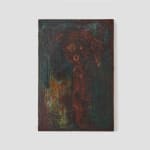Rufino Tamayo
Untitled, 1940
Oil on canvas
14 1/2 x 9 3/4 in
36.8 x 24.8 cm
36.8 x 24.8 cm
Copyright The Artist
Further images
-
(View a larger image of thumbnail 1
)

-
(View a larger image of thumbnail 2
)

-
(View a larger image of thumbnail 3
)

-
(View a larger image of thumbnail 4
)

-
(View a larger image of thumbnail 5
)

-
(View a larger image of thumbnail 6
)

-
(View a larger image of thumbnail 7
)

-
(View a larger image of thumbnail 8
)

Recognized today as one of Mexico’s greatest artists, Rufino Tamayo (1899–1991) began his artistic career as an outcast. Tamayo's contemporaries, such as Diego Rivera, José Clemente Orozco, and David Alfaro...
Recognized today as one of Mexico’s greatest artists, Rufino Tamayo (1899–1991) began his artistic career as an outcast. Tamayo's contemporaries, such as Diego Rivera, José Clemente Orozco, and David Alfaro Siqueiros ostracized Tamayo for his apolitical stance and preoccupation with aesthetics. But social isolation failed to deter Tamayo from his pursuit of developing a fundamental, universal, and distinctly Mexican visual aesthetic.
For his commitment to his artistic philosophy, Tamayo earned the respect of his critics later in life, especially David Alfaro Siqueiros, to whom Tamayo gifted an early, previously undisplayed oil painting that has recently entered our collection as a historical artifact with the cooperation of the Siqueiros family. In this relic of Tamayo's artistic development, an abstracted figure grounded in a caliginous palette appear for the first time, introducing a visual motif that Tamayo would revisit throughout his later career in works such as Figura en Rojo.
For his commitment to his artistic philosophy, Tamayo earned the respect of his critics later in life, especially David Alfaro Siqueiros, to whom Tamayo gifted an early, previously undisplayed oil painting that has recently entered our collection as a historical artifact with the cooperation of the Siqueiros family. In this relic of Tamayo's artistic development, an abstracted figure grounded in a caliginous palette appear for the first time, introducing a visual motif that Tamayo would revisit throughout his later career in works such as Figura en Rojo.
4
of
4







